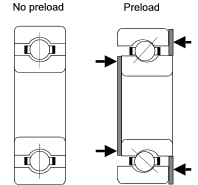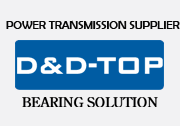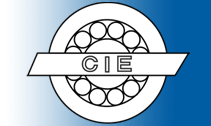Radial play (or internal radial clearance) is an important consideration when choosing a bearing. The radial play in the bearing before it is fitted can be called the "initial" radial play. "Residual" or "operational" radial play is what is left when the bearing has been fitted.There should normally be a slight residual radial play in the bearing to minimize ball skidding and reduce axial play (end play). Correct selection of the initial radial play can avoid faster bearing wear and reduce unwanted play.
A number of things can alter the radial play during the fitting process. A tight shaft fit where the shaft is slightly larger than the bearing inner ring (often called an interference fit or a press fit) will stretch the inner ring so making it bigger. This reduces radial play by up to 80% of the interference fit. The same thing happens if the outer ring is a tight fit in the housing. This can squash or compress the outer ring also reducing radial play. A difference between the shaft and housing temperatures can also be a problem. If a bearing inner ring gets hotter than the outer ring, it will expand more and reduce radial play. This can be calculated as follows:
Chrome Steel: 0.0000125 x (inner ring temp - outer ring temp °C) x outer ring raceway diameter in mm.
440 Stainless Steel: 0.0000103 x (inner ring temp - outer ring temp °C) x outer ring raceway diameter in mm.
The outer ring raceway diameter can be roughly calculated as: 0.2 x (d + 4D) where d is the bore in mm and D is the outer diameter in mm.
There can also be problems where, for example, the shaft is made of different material to the bearing and housing and expands more due to a different expansion coefficient. In such a case, a bearing with a looser radial play may be needed.
In most cases a standard radial play is suitable and preferable as these bearings are usually more readily available and may be cheaper but there are certain conditions where a non-standard clearance is recommended as long as other conditions such as temperature or interference fit are not present. A tight radial play is better for greater rigidity and running accuracy if the load is purely radial. This may be worth considering for very low noise, low vibration applications which is why many of our small electric motor bearings are MC3 radial play. However, in other applications, a tight radial play may be highly undesirable. If there is a high axial load, a loose radial play is preferable as it increases the bearing's axial load capacity. Also, a loose radial play will better accommodate misalignment between the shaft and housing and cope better with heavy loads or shock loads.
Finally, radial play has nothing to do with precison grade or tolerance. It is often believed that a loose bearing means a low precision bearing and that, when there is too much play, a higher precision grade will solve the problem. In this case, the answer is often to use a bearing with a tighter radial play or use a tighter shaft/housing fit or introduce an axial preload to the bearing (see below). Using a higher precision grade will make no difference to the "looseness" of the bearing. You can have a P4 (Abec7) grade bearing with a loose radial play just as you can have a P0 (Abec1) bearing with a tight radial play.
 Preload Preload
In many low noise, low vibration or high speed applications, zero radial play is desirable. This gives greater rigidity, reduces noise and vibration, gives greater ball alignment and running accuracy and can eliminate ball skidding under high acceleration. This is achieved by applying a preload to
the bearing. A preload is an axial load deliberately applied via the inner or outer ring to offset the outer ring against the inner ring and reduce the radial play to zero. Preload is usually applied by the use of wave or spring washers or springs and normally to the stationary ring which should have a sliding fit to the shaft or housing to allow for axial movement. If the bearings are glued on to the shaft or housing, it may be possible to use weights to keep the bearing preloaded while the adhesive cures. The amount of preload should be as small as possible. Excessive preload can cause the bearing to be too tight leading to very high frictional torque and rapid failure. |
For the actual clearances used in the radial play groups, please see our RADIAL PLAY TABLES
Tight radial play |
MC1/MC2, P02/P13, C2 |
Consider for pure radial loads and low noise, low vibration applications. Beware of axial loads, high speed applications, heavy vibration and very low torque applications. Interference fits should not be used. |
Medium radial play |
MC3/MC4, P24/P35, CN |
Most commonly used and supplied as standard. |
Loose radial play |
MC5/MC6, P58/P811, C3/C4 |
Consider for higher axial loads due to greater thrust load capacity. Greater interference fits and shaft misalignment can be tolerated. Also good for heavy or shock loads. Not recommended for low noise applications unless tighter radial play not suitable. |
|



 Preload
Preload